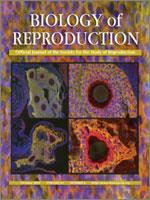Hyperactivation, a motility pattern of mammalian sperm in the oviduct, is essential to fertilization. Hyperactivation helps sperm to swim effectively through oviductal mucus, to escape from the sperm reservoir, and to penetrate the cumulus matrix and zona pellucida of the oocyte. There is some evidence that mammalian sperm can undergo chemotaxis; however, the relationship of chemotaxis to hyperactivation is unknown. Ca2 signaling is involved in hyperactivation and implicated in chemotaxis as well. In vivo, sperm hyperactivate in the lower oviduct, far from the cumulus-oocyte complex and possibly beyond the influence of chemotactic gradients emanating from the oocyte or cumulus. Thus, sperm are likely to be hyperactivated before sensing chemotactic gradients. Chemotactic signals might modulate hyperactivation to direct sperm toward oocytes as they reach a region of influence. Ca2 -directed modulation of hyperactivation is a potential mechanism of this process.
How to translate text using browser tools
12 May 2010
Rethinking the Relationship Between Hyperactivation and Chemotaxis in Mammalian Sperm
Haixin Chang,
Susan S. Suarez
ACCESS THE FULL ARTICLE

Biology of Reproduction
Vol. 83 • No. 4
October 2010
Vol. 83 • No. 4
October 2010
calcium
chemotaxis
fallopian tubes
hyperactivation
oviduct
sperm
sperm motility and transport




